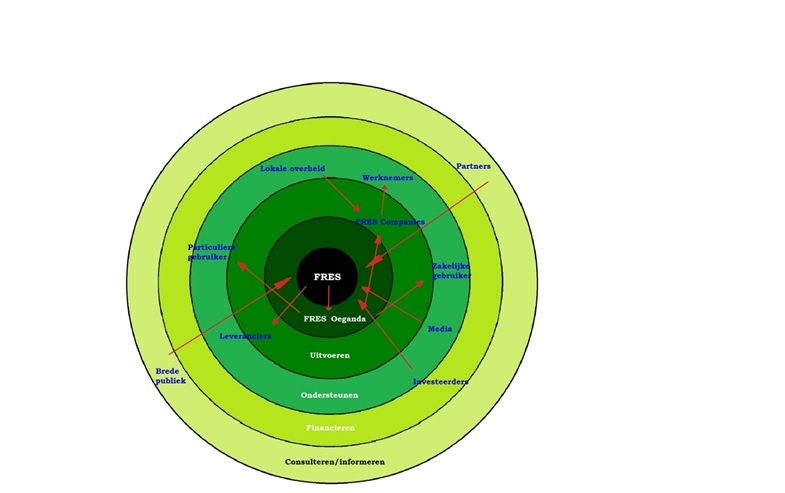Beginning at the circle of the headquarters of FRES from which FRES Uganda is controlled we make a stakeholders analyses of the entire network needed to supply the PV components to the users. This is done by making a scheme with the different levels of interaction between the relations. In this scheme the arrows clarify the underlying relations between the various parties.
FRES Uganda follows directly after the first circle. This part of FRES supports the local FRES companies in delivering to both business- and private users which are in a 50/50 distribution.
To deliver the SHS systems FRES needs a supplier, which is placed in the next circle. In this case for example the battery supplier is called Hoppecke Batteries, a German company. This company will, besides delivering the batteries, also provide the company with information about the product. Therefore, the supplier in our model is placed on the boundary of the two circles of executing and support.
Furthermore the local government can help the FRES companies, for example by providing an interpreter or provide other information and will therefore be positioned at the support circle. Also the media supports FRES by writing articles in which people can read about the mission of FRES. Finally the customers themselves support FRES by generating revenue.
Going one circle further we arrive at the financing circle. In this circle the investors are placed such as ING bank, NUON and The World Bank.
Then, going to the last circle, the consulting relations are summarized. Here the people surrounding FRES and the undefined partners are placed.
